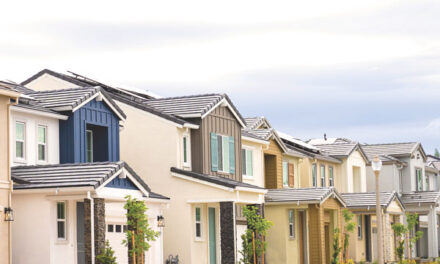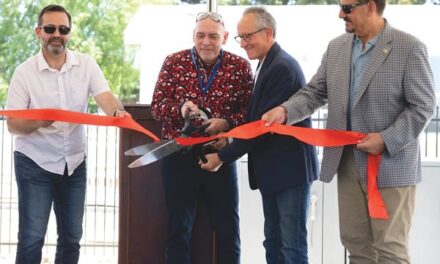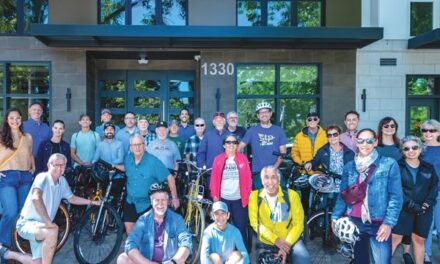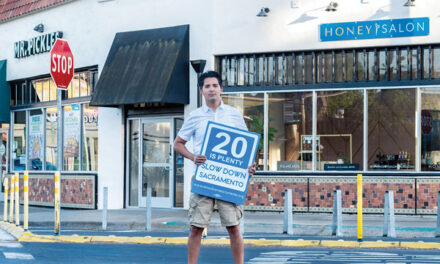We humans tend to resist change, especially when we fear it may lower our property values.
For those fortunate enough to own a home in a state rapidly making it too expensive for our children to buy one, change is coming whether we like it or not. California’s economy cannot sustain itself with a residential real estate market off limits to whole generations. We have to think differently about housing.

Sacramento is considering a bold move on that front. The city is thinking about eliminating zoning designations that prohibit multi-unit homes on single-family lots.
The way some people are reacting, you might think Mayor Darrell Steinberg and the City Council want to force residents to rent spare bedrooms to all comers.
“No one will have the ability to live in lower-density neighborhoods,” one neighborhood activist warns.
Mitch Rohrer, president of the Land Park Community Association, suggests allowing up to four dwelling units per lot could turn his neighborhood into Midtown or, worse yet, San Francisco. He insists opposition to multi-unit housing doesn’t represent a classic Not In My Backyard attitude.
“That’s not what we’re doing,” he says. “We all worked hard to build and work our way up.”
The East Sacramento Improvement Association, one of the city’s oldest neighborhood groups, takes a measured approach.
Recognizing the need for diverse and affordable housing options, Tricia Stevens, the group’s president, expressed support but urged the city to protect height, bulk and design standards for new multi-family units. Steinberg and council members agree.
“Consider a focused implementation that considers key locations where this strategy might work the best in order to address both the need for rental housing and more affordable for-sale housing,” Stevens wrote to the council.
She offers some practical recommendations for multi-family units: Put them on collector streets, corner lots, near grocery stores, medical facilities and parks. Stage them where lots can be assembled for townhomes, bungalow courts, or small lot or cluster homes. And consider vacant or underused commercial, office and warehouse areas that can be re-purposed.
This is an old story. Many cities celebrate neighborhoods that are eclectic, mixed-use and diverse. People drive less, walk more and are more likely to interact with neighbors. Done well, residential neighborhoods can be more interesting, lively, diverse and resilient.
Liberals—I place myself somewhere left of center—lament how our country is divided and polarized. But we often do little more than pay lip service to positive change when it hits close to home.
Phil Ochs, the iconic 1960s folk singer, defined liberals as “an outspoken group on many subjects—10 degrees to the left of center in good times, 10 degrees to the right of center if it affects them personally.” If Ochs were alive today, he’d have plenty of material.
Allowing thoughtfully planned and designed duplexes, triplexes and fourplexes in single-family zoned residential neighborhoods such as Land Park is a good idea. City Council member Angelique Ashby was correct when she said anyone who thinks a quadplex is inevitably ugly should consider some of the “beautiful quadplexes” along J Street. Some of those gems would make any neighborhood proud.
Steinberg and the City Council have expressed strong support for the zoning changes, which would be part of the city’s 2040 General Plan and voted on sometime in the next year. If approved, we could see new multi-family units in about two years.
This will not solve our housing crisis. But it will provide more affordable and flexible options for people whose families and living arrangements don’t fit neatly into cookie-cutter, homogeneous neighborhoods designed decades ago. Other cities and states are moving in this direction. It doesn’t mean an end to the world.
“Everybody should have the opportunity to not only play in Land Park but to live in Land Park,” Steinberg says. “That’s the Sacramento that we all uphold, that we love, that we value, and you better believe this drive for inclusion and equity is the driving force of our city and it is going to continue well beyond my tenure here.”
Flexible zoning is what Sacramento needs if we really support equity, inclusion, diversity, affordability and breaking down barriers that divide us.
Gary Delsohn can be reached at gdelsohn@gmail.com. Follow us on Facebook, Twitter and Instagram: @insidesacramento.















